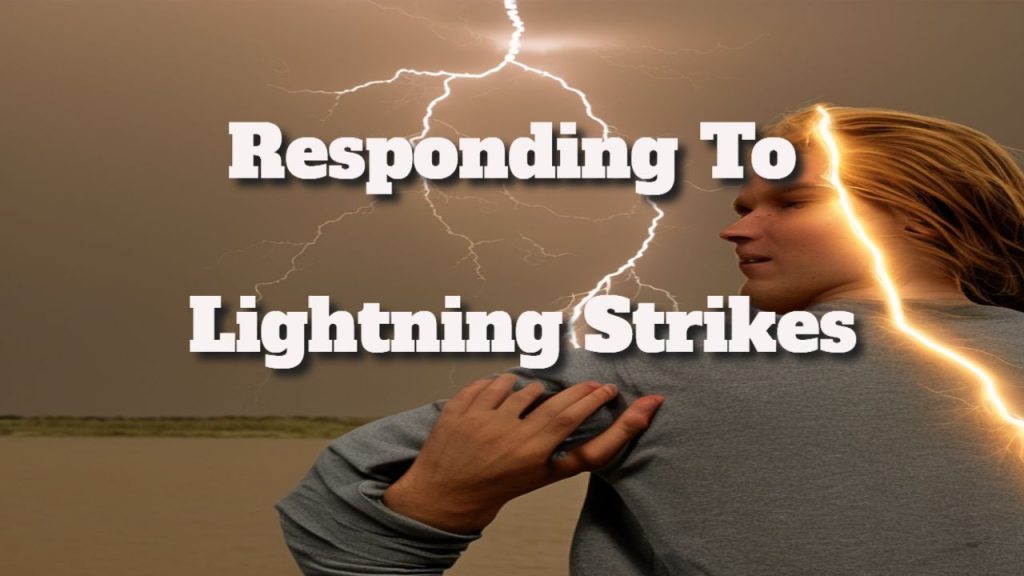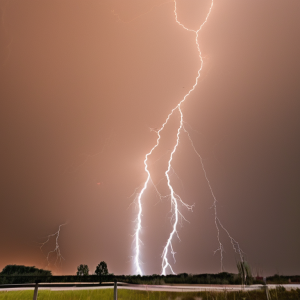Enhance Your Lightning Safety: Effective Strategies for Protection Against Lightning Strikes
Understanding Lightning: Unpacking Its Intricacies and Associated Risks
Lightning is not only a captivating natural occurrence that showcases nature’s raw power but also a significant danger that poses serious risks to individuals and communities alike. Understanding the phenomena behind lightning is essential for developing comprehensive safety measures. By exploring its mechanics and recognizing the hazards associated with it, we lay a strong foundation for effective strategies that will be discussed in-depth in the subsequent sections of this content.
Fundamentally, lightning is a dramatic electrical discharge that transpires during thunderstorms, resulting from the accumulation and subsequent release of static electricity that builds up in the atmosphere. While this natural spectacle can be mesmerizing, its potential dangers necessitate a heightened awareness and readiness to act during such events.
Within thunderclouds, the interaction between water droplets and ice particles leads to the separation of electric charges: positively charged particles rise to the upper regions of the cloud, while negatively charged particles settle at the bottom. This imbalance of charges creates the optimal conditions for the stunning yet often hazardous lightning storms we witness.
Lightning manifests in various forms, each with unique characteristics. The most prevalent type is referred to as cloud-to-ground lightning, which descends from the base of a thundercloud directly to the earth’s surface, delivering an immensely powerful and destructive force that can result in significant damage.
This specific type of lightning is notorious for its speed and intensity, frequently leading to catastrophic consequences, including property damage and personal injuries. Another variant, cloud-to-cloud lightning, occurs between different areas within the same storm cloud, generating astonishing light displays that can dazzle observers.
The brilliant flashes of cloud-to-cloud lightning create an awe-inspiring visual experience that lights up the night sky, captivating onlookers and serving as a stark reminder of the power inherent in nature.
While the breathtaking spectacle of lightning can be mesmerizing, it is crucial to remain aware of the inherent threats associated with this powerful natural force.
Lightning strikes can cause severe injuries or even fatalities, claiming thousands of lives each year due to this natural hazard. Recognizing these risks is essential for fostering a proactive culture of safety.
It is vital to understand that lightning can strike even when a storm seems distant, as electrical charges can travel great distances. Acknowledging the potential threats posed by lightning is crucial for enhancing our safety and preparedness.
Armed with this knowledge, we can appreciate the importance of implementing proactive safety measures. By deepening our understanding of the complexities of lightning, we empower ourselves to adopt effective strategies that can help mitigate potential risks.
To further grasp how lightning is generated, we must explore the various elements that contribute to its formation. Thunderstorms are the primary sources of lightning, providing essential ingredients such as moisture, unstable air, and updrafts.
When these components converge, they create ideal conditions for spectacular electrical discharges. Thunderstorms commonly develop in warm, humid regions where rising warm air interacts with cooler air masses, setting the stage for remarkable lightning activity.
The dynamics within a thundercloud are vital to the process. Updrafts collide, allowing tiny ice particles and water droplets to interact, ultimately leading to charge separation. This process ignites a complex chain of events that culminates in the occurrence of lightning strikes.
As positive and negative charges accumulate, a powerful electric field emerges within the cloud. When this electric field reaches a critical intensity, a discharge occurs, resulting in a lightning strike that can be both stunning and perilous.
The ability of lightning to illuminate the intricate nature of our environment is truly remarkable. The different colors of lightning can provide clues about the composition of storm clouds.
For instance, blue or purple lightning indicates the presence of ice particles, whereas yellow or red lightning suggests the influence of dust or pollution within the cloud. By investigating these characteristics, scientists glean valuable insights into the meteorological conditions conducive to lightning formation.
Although the breathtaking beauty of lightning captivates many, it is vital to remain vigilant regarding the associated hazards posed by this powerful natural phenomenon. Lightning strikes can occur at astonishing speeds, and their destructive potential should never be underestimated.
In the upcoming sections, we will explore essential safety strategies that are key to protecting ourselves from lightning strikes.
By equipping ourselves with knowledge and implementing preventative measures, we can effectively minimize risks and safeguard ourselves from lightning strikes. Join us on this enlightening journey as we uncover the critical elements of lightning strike safety.
Crucial Safety Protocols to Mitigate the Risk of Lightning Strikes
Lightning strikes pose a universal risk, as this powerful natural event can occur suddenly and without warning.
Establishing comprehensive safety protocols and protective measures is vital for ensuring your safety during a lightning event. By implementing these strategies, we can significantly reduce the likelihood of being struck while also protecting those around us.
The primary precaution when a thunderstorm approaches is to remain indoors. This action provides the highest level of protection against potential lightning strikes. Ensure you take shelter in a sturdy building, especially one equipped with a lightning protection system designed to mitigate the effects of electrical discharges.
Avoid seeking refuge in open garages, picnic shelters, or any other structures that lack adequate protection. While indoors during a thunderstorm, maintain a safe distance from windows, doors, and electrical devices, as these can serve as pathways for lightning strikes.
If finding indoor shelter is impossible, seek a suitable temporary refuge. Stay clear of isolated trees, wide-open fields, or large metal structures, as these can act as lightning rods, attracting electrical discharges.
To minimize the risk of a direct strike, locate a low-lying area away from potential lightning rods. Lie flat on the ground with your hands covering your ears to protect your hearing from the sound of the strike.
Equally important is being aware of lightning safety protocols while engaging in various outdoor activities. Always check weather forecasts before participating in outdoor pursuits such as hiking, golfing, or swimming.
By seeking shelter or avoiding outdoor activities during thunderstorms, you can significantly reduce your risk of being struck by lightning.
Remember, minimizing your chances of being struck by lightning is crucial for your safety. By staying indoors, seeking appropriate shelter, and understanding lightning safety recommendations, we can effectively protect ourselves and those around us.
However, safety measures extend beyond these initial actions. By taking proactive steps, individuals can further reduce their risk of lightning strikes and enhance their safety during thunderstorms.
Avoiding contact with water during rainstorms is an essential safety practice. Being in or near water significantly increases the risk of lightning strikes, as water is an excellent conductor of electricity.
If you’re engaged in activities such as swimming or boating, exit the water immediately upon hearing thunder or seeing lightning. Remain indoors or inside a fully enclosed vehicle with closed windows until the storm has passed.
Additionally, understanding the “30-30 rule” is crucial for safety during thunderstorms.
If there are fewer than 30 seconds between observing lightning and hearing thunder, take cover immediately. It’s also wise to remain safe indoors for at least 30 minutes after the last flash of lightning or rumble of thunder to ensure the storm has completely passed.
Creating a comprehensive action plan for outdoor sports and recreational activities is essential. Coaches, organizers, and participants should establish clear guidelines to prioritize lightning safety.
In anticipation of forecasted thunderstorms, it is imperative to halt all activities promptly and move everyone to a designated safe location to avoid unnecessary risks.
Outdoor sporting events, such as golf tournaments or football games, may need to be postponed or rescheduled to ensure participants’ safety.
Educating children, youth, and adults about lightning safety is a crucial component of safety planning at home and in schools.
By raising awareness of lightning dangers and safety practices, individuals can make informed decisions to protect themselves during thunderstorms.
A comprehensive approach that combines practical safety measures, precautions, and advanced strategies is essential for ensuring safety during thunderstorm events.
By avoiding water during thunderstorms, adhering to the 30-30 rule, developing action plans for outdoor activities, and promoting awareness of lightning safety, we can significantly lower the likelihood of lightning strikes.
Stay vigilant and informed, as your safety and the safety of those around you should always be a top priority.
Critical Response Procedures for Lightning Strike Emergencies
Lightning strikes can occur without any warning and pose a severe threat to our lives. Understanding the proper protocols, including first aid techniques, calling for emergency assistance, and providing aid to injured individuals, is vital in these critical situations.
First and foremost, personal safety must be prioritized in the event of a lightning strike. If you find yourself outdoors during a thunderstorm, seek shelter immediately to minimize your risk.
Avoid wide-open spaces, tall isolated structures, and any bodies of water, as these can act as conductors for lightning. Instead, seek refuge in a solid building or a fully enclosed vehicle with closed windows. Avoid taking cover under trees or in temporary structures, as they offer minimal protection against lightning.
Once you have secured suitable shelter, adhere to established safety guidelines. Remember that electrical appliances, plumbing fixtures, and telephones can conduct electricity, significantly increasing your risk during a storm.
Avoid showering or bathing during a thunderstorm, as water is an excellent conductor of electricity. Stay away from windows, doors, and concrete walls, which lightning can penetrate, to protect yourself from potential hazards.
If someone is struck by lightning, swift action is paramount. Assess the individual’s breathing and pulse. If either is absent, call 911 immediately and initiate cardiopulmonary resuscitation (CPR) if you are trained to do so.
Beginning resuscitation as quickly as possible can significantly improve the chances of survival. If the victim is conscious but injured, provide assistance and comfort until medical help arrives.
In the event of a lightning strike, every second counts. Stay calm, act swiftly, and ensure the safety of everyone involved by following the necessary procedures. By understanding these protocols, we can better protect ourselves and those around us from the dangers associated with lightning strikes.
With this knowledge, we can be better prepared for emergencies stemming from lightning strikes. We will delve into advanced first aid procedures relevant to these situations and emphasize the significance of being informed and connected in times of crisis.
Be prepared for the unexpected, as emergencies can unfold in an instant. Knowledge and readiness are key to safeguarding ourselves and others during lightning strikes.
By familiarizing ourselves with advanced first aid techniques and staying educated on critical response measures, we enhance our ability to respond effectively to incidents involving lightning strikes.
Exercise caution when administering first aid to anyone struck by lightning. Even in the absence of visible injury, lightning can cause severe burns and internal injuries that require immediate attention.
Begin by assessing the individual’s airway, breathing, and circulation. If the person is unresponsive or lacks a pulse, call 911 without delay and initiate CPR if you are properly trained.
Promptly starting resuscitation can dramatically enhance survival rates and outcomes for the affected individual.
While waiting for medical assistance, focus on anyone who is unconscious but injured. Always keep in mind the four primary goals in these critical situations:
- Stabilize the individual.
- Maintain appropriate body temperature.
- Minimize the risk of further injuries.
- Ensure the individual receives medical care as soon as possible.
If the person is experiencing difficulty breathing, has burns, or exhibits chest pain, immediate medical attention is crucial for their well-being.
Discussing the importance of being informed and connected during lightning events is vital. Weather conditions can shift rapidly, making it essential to stay updated about impending severe weather to take preventive actions.
Stay informed about severe weather alerts by regularly checking forecasts, listening to local news, or utilizing weather apps. Maintain communication with family, friends, or colleagues to ensure everyone is aware of safety protocols and can assist if needed.
Understanding advanced first aid techniques and remaining current on lightning safety empowers us to respond effectively and protect those at risk.
Remember, while lightning strikes are unpredictable, we can safeguard ourselves by arming ourselves with knowledge and remaining vigilant. Stay safe, informed, and prepared for the unexpected.
The Article Lightning Strike Protection: Stay Safe During Storms Appeared First On Survival Avenue.
The post Lightning Strike Protection Tips for Storm Safety appeared first on Survival Bite.
The Article Lightning Strike Protection: Essential Tips for Safety During Storms Was Found On https://limitsofstrategy.com








This is such a shocking topic—pun definitely intended! I’ve always found it fascinating how nature can be both beautiful and terrifying at the same time. I remember the first time I saw lightning up close during a summer storm. I thought I was witnessing a magical performance until I realized I was just a few feet away from a big tree, which was probably not a wise choice.
You’re right—nature really does have that dual personality! It can show off its beauty one moment and then bring a serious jolt the next. That summer storm experience you shared is wild. It’s crazy how we can find ourselves in the heart of these powerful moments without realizing it’s also a time to be cautious.